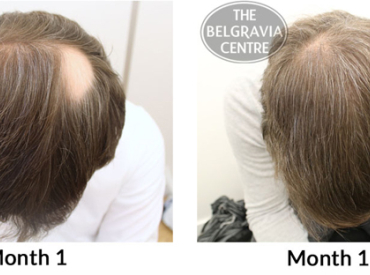-
Male Hair Loss Conditions
- Male Pattern Hair Loss
- Other Conditions
-
Male Hair Loss Treatments
- Hair Loss Treatments – A Guide
-
Patterns of Hair Loss
- Receding Hairline
- Thinning Crown
- General Thinning
-
Hair Loss Success Stories
- Hair Regrowth Photo-Gallery
-
Female Hair Loss Conditions
- Hair Loss in Women - Guide
- Female Pattern Hair Loss
- Telogen Effluvium (TE)
- Diffuse Thinning | Chronic TE
- Alopecia Areata
-
Female Hair Loss Treatments
- Female Hair Loss Treatments - A Guide
- Belgravia High-Strength Minoxidil
- Hair Vitalics For Women
- Clinical Treatment Therapy
-
Hair Loss Success Stories
- Women’s Hair Regrowth Photo-Gallery
-
Back
-
Male Hair Loss Conditions
- Male Pattern Hair Loss
- Other Conditions
-
Male Hair Loss Treatments
- Hair Loss Treatments – A Guide
-
Patterns of Hair Loss
- Receding Hairline
- Thinning Crown
- General Thinning
-
Hair Loss Success Stories
- Hair Regrowth Photo-Gallery
-
Back
-
Female Hair Loss Conditions
- Hair Loss in Women - Guide
- Female Pattern Hair Loss
- Telogen Effluvium (TE)
- Diffuse Thinning | Chronic TE
- Alopecia Areata
-
Female Hair Loss Treatments
- Female Hair Loss Treatments - A Guide
- Belgravia High-Strength Minoxidil
- Hair Vitalics For Women
- Clinical Treatment Therapy
-
Hair Loss Success Stories
- Women’s Hair Regrowth Photo-Gallery
Alopecia Areata Genetic Links Emboldened Through Twins Studies
Dermatologists in Israel and Georgia have reported on what appears to be a unique case in which identical twin brothers experienced simultaneous hair loss not once but on two, separate occasions.
The brothers, who are six, both lost hair to the autoimmune disorder Alopecia Areata, which leads to bald patches that typically appear suddenly. While simultaneous cases of Alopecia Areata have been observed in identical twins before, the dermatologists say that this is the first time hair loss of this kind has been seen in identical twins twice.
Strong genetic basis
Writing about the incident in the International Journal of Trichology, Nino Lortkipanidze and Abraham Zlotogorski at the National Centre of Dermatology in Tbilisi in Georgia and Yuval Ramot at the Hadassah-Hebrew University Medical Center in Jerusalem explain that the incidents add weight to the theory that Alopecia Areata has a strong genetic basis, with environmental factors playing a role in its initiation. In other words, some people are genetically predisposed towards the condition, which may or may not be triggered at some point or points in their lives by certain events.
What is remarkable is that the two six year olds at the heart of the story - pictured below - both lost hair in the same place at the same time; it regrew after local corticosteroid treatment the first time it happened. Fourteen months later when the same thing happened again (though this time the hair loss was two weeks apart), a topical garlic solution was applied to the bald patches but, perhaps unsurprisingly, had little or no effect. Continues below
The authors say that ‘infectious agents’ that may have led to the onset of the Alopecia Areata have largely been ruled out; these needed to at least be considered as some autoimmune disorders are influenced by infectious pathogens. Among the potential environmental triggers that caused the boys’ hair loss are stress, physical trauma, allergies, chemicals and seasonal changes.
What the authors find especially interesting is that the hair loss appeared in the same place on each child, which they say suggests that people may be genetically predisposed to Alopecia Areata in certain parts of the scalp and not others. The authors suggest this should be considered in further studies.
Knowledge expanding
The medical community’s knowledge of Alopecia Areata is expanding at a rapid rate, with multiple trials taking part around the world into potential new treatments for the condition. Experts believe Alopecia Areata will affect around 1.7 per cent of all people in their lifetime, which means that just over a million people alive today in the UK could expect to be affected.
Treatment available for under 16s is limited, with many turning to charities such as the Little Princess Trust who provide free real-hair wigs for children with hairloss.
For those aged 16 or over, there are effective treatments available to help accelerate regrowth. Belgravia's hair loss specialists have seen many successes in adults with Alopecia Areata by using topical applications of high strength minoxidil. This can form part of a bespoke alopecia areata treatment course alongside various Hair Growth Boosters to help encourage normal hair production to resume.

The Belgravia Centre
The Belgravia Centre is a world-renowned group of a hair loss clinic in Central London, UK. If you are worried about hair loss you can arrange a free consultation with a hair loss expert or complete our Online Consultation from anywhere in the world for home-use treatment.
View our Hair Loss Success Stories, which includes the world's largest gallery of hair growth photos and demonstrates the level of success that so many of Belgravia's patients achieve.



